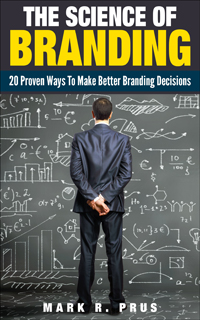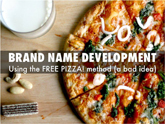Naming The Store Brand
Every Sunday I go through the circulars in the paper looking for new products. I usually spend a lot of time with the ads from the national drug store chains (Walgreens, CVS, and Rite Aid). Recently, I observed that each chain seems to have a radically different philosophy on store brand naming. And while this observation isn’t earth shattering, it exposes the marketing strategies (or lack thereof) of each chain.
For example, check out the allergy section. The big brand names like Benadryl®, Claritin® and Zyrtec® all have store brand/private label competition. Walgreens naming protocol for its store brand is pretty straightforward and seems to be designed to help a consumer find the Walgreens knockoff of the branded product. You can buy Wal-dryl, Wal-itin, and Wal-zyr, and the packaging is color coded to make it easier. This is a very consistent strategy that is designed to make life easier for the consumer and also designed to build the “Wal-“ prefix as a brand.
The Single Most Important Marketing Effort For Your Product
In the spring of 1971, a new marketing idea was hatched. Today, over 38 years later, the idea is still the most important thing you can do to achieve marketing success.
In an ad in the April 7, 1971 New York Times, David Ogilvy outlined his 38 points for creating “advertising that sells.” He called the #1 item on the list “the most important decision.” He went on to say that “the results of your campaign depend less on how we write your advertising than on how your product is positioned.”
His message was clear…you need to start with a clear positioning for your product. With a clear positioning, you can establish your marketing territory versus your competitors. Without a clear positioning, you will forever struggle to establish your marketing message.
To Google® Or Not To Google®
Full disclosure…I own Google stock. I like their products and their potential. However, I am more than a bit concerned about how they use their names and trademarks.
Microsoft® names its products in a traditional fashion. Microsoft is the company; names like Windows, Silverlight, Bing are clearly the products. A very logical naming architecture that makes it clear where the company ends and the product begins.
Google is a company and a trademark for several goods and services. The Google trademark is perhaps best know for “Search engine services” (International Class 042) but Google can also be “Dissemination of advertising for others via the Internet” (IC 035) or “Telecommunication services” (IC 038) or “Financial services” (IC 036) or any of a number of different product or service ideas that carry the name Google.
How David Can Beat Goliath
How David Can Beat Goliath in Naming OTC Medicines
After 25+ years in the highly competitive world of OTC medicines, I’ve learned some things about naming products. One thing I’ve learned is you have to understand the “Goliaths” of the category and zig when they zag.
Many OTC categories are dominated by brands that have been building equity for 50+ years. Brands like TUMS® (75+ years) and Bayer® Aspirin (100+ years) are Goliaths because they are well positioned, satisfy consumer needs, and have had consistent marketing support. Should you study these historical successes? You bet. People buy these brands for a reason. Find it. Exploit it if you can with a name of your own.
Another Goliath is the constant influx of new Rx-To-OTC switches. Brands like Advil® (introduced 1984), Claritin® (1993) and Prilosec® OTC (2003) are “switch Goliaths” that turned categories upside down.



